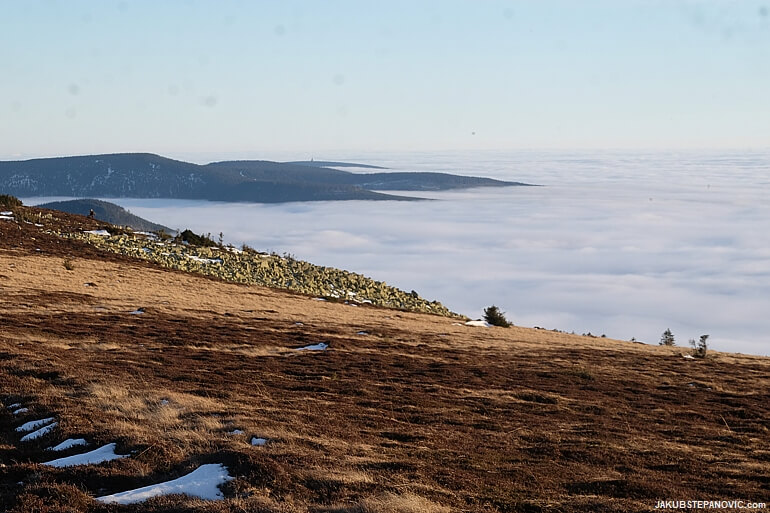
Climbing above the clouds to experience scenes out of this world.
This year's winter solstice brought a rare conjunction of Jupiter and Saturn, which gave us a fantastic excuse for a hike in Czechia's highest range, the Giant Mountains. Well, the sky in recent days was like looking up at a stainless-steel pot lid, so I didn't set high expectations for a celestial show. Still, if there was a place to see it, the high plateau was it. And since being in the mountains is excellent regardless, one can't go wrong with going anyway.
I also used the trip as an encouragement to get back to taking photos with a big camera. I used to do that all the time when photography paid my bills, but I put the equipment in storage about three years ago and started using a compact with a fixed lens instead. The compact is fine for most situations and much more portable — a big plus for me. However, it takes away the creativity of composing the scene associated with dedicated wide and long lenses. Recently, I started missing it. And so I dug through the storage to find the box with my old photo stuff to resurrect the big camera and some lenses. "This trip is surely worth lugging the extra kilos to capture some cool stuff," I thought. I charged the batteries and switched the camera on to see if it still worked. It looked all right. "Great!" I smiled and chucked it into my backpack together with two lenses. "Let the adventure begin!"
The foot of the range was thoroughly submerged in clouds, but the path up was beautiful. No matter the sky situation, mountains consistently deliver engaging visuals.
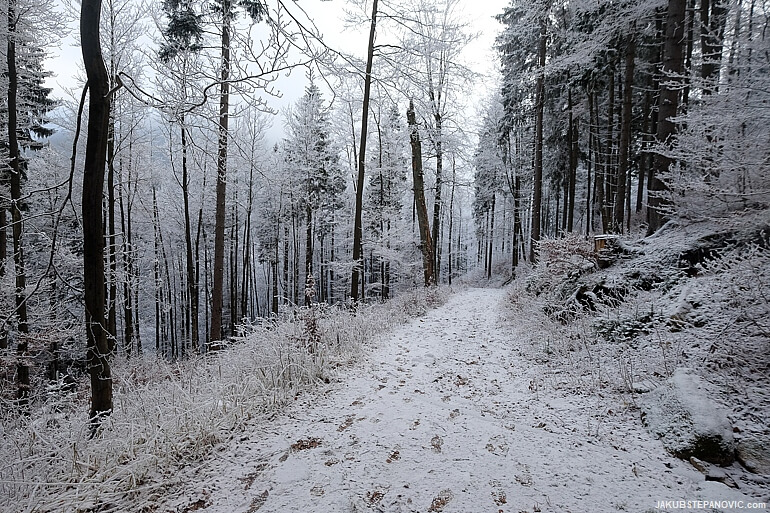
Alas, the wide-angle lens' aperture ring and optical stabilization didn't work. I started to recall that the bulk was not the only reason I got me the other camera. Still, the lens was usable, the wintery conditions were neat, and the overcast sky occasionally teased with blue color. The blue shone through the clouds more often with the rising elevation, providing plenty of motivation to keep climbing. Sure enough, just below the tree line, the clouds ended. Wow! Let's swap to the long lens! But my excitement underwent a test when I raised the camera's viewfinder towards my eye. The image was oddly soft.
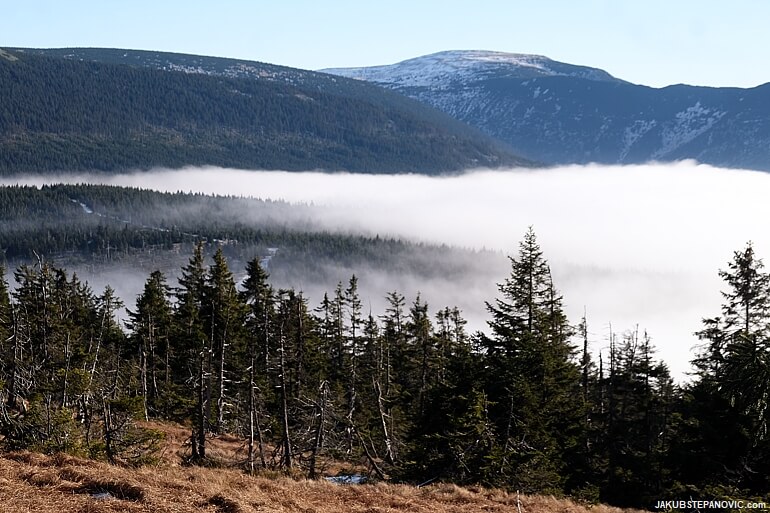
It was then that the hazed memory became clear. Both lenses were damaged, and their repair would have been more expensive than the new, small camera. The long lens' focus ring was broken, and it could not focus past some 20 meters. When I closed down the aperture to increase the depth of focus and used the lens only on the wider end, the image was a tad better. Still, it was apparent: the heavy barrels of metal and glass I carried a vertical kilometer were only a bit better than overly expensive paperweights. "Great." I sighed and accepted that I wouldn't be able to make any prints out of this trip and rolled with it. The scenery around was too good for me to be upset. Let's enjoy being here.

Besides the outlooks, the ridge featured several beautiful granite formations, so there was always something to admire.
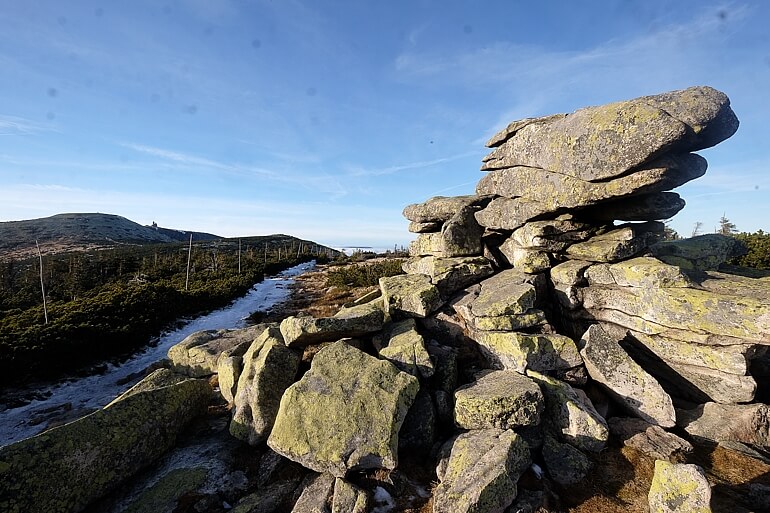
One of them served as a picnic spot.
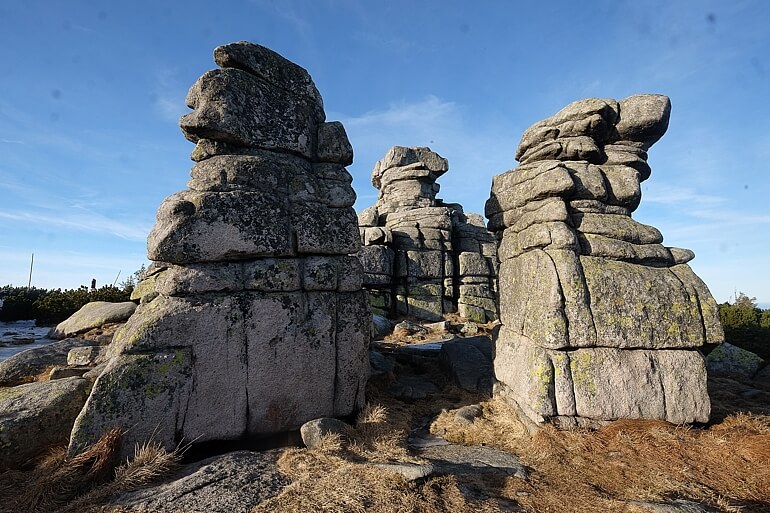
The clouds were coming from the south, stopped by the ridge, and left the north clear-ish.
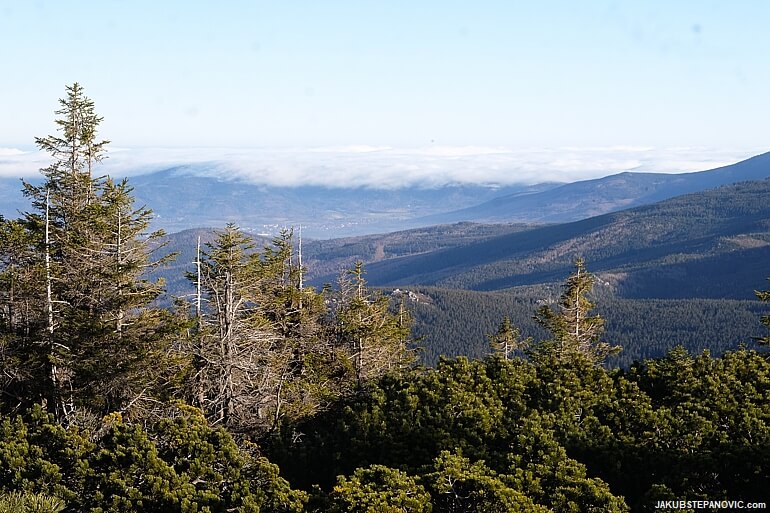
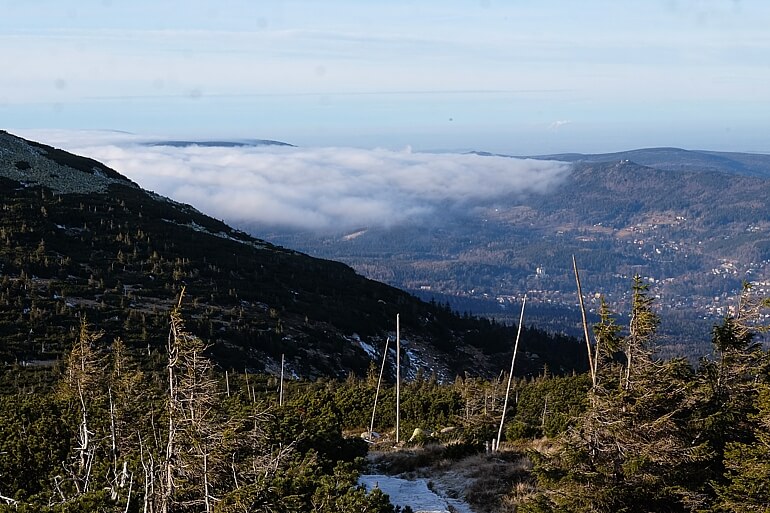
As it is during the shortest days of the year, the sun started setting quite soon. Anything that stood in its soft, warm light cast long shadows.
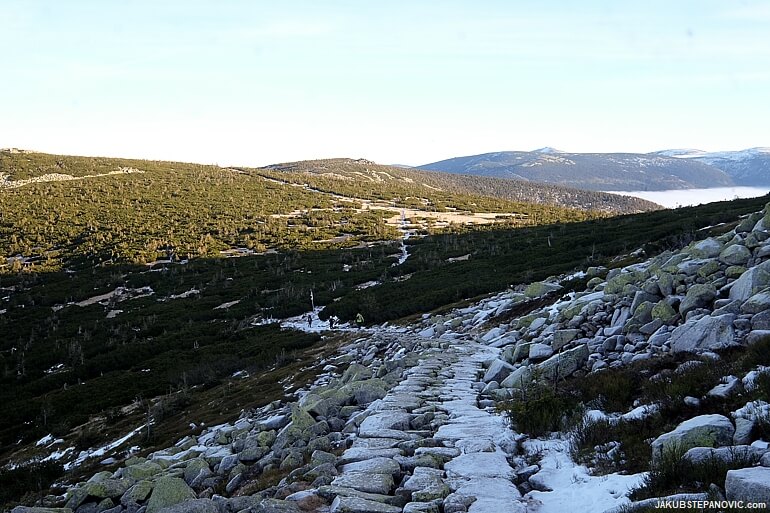
While planning the hike, we added some points of interest on the ground as a backup should the sky not cooperate. One was the Śnieżne Kotły, a large cirque with a few fantastic observation platforms.

Now that the sky cooperated, the visibility was stunning, and the place kept on delivering.

At this point, the sun neared the horizon, and our trail turned southwest, where the conjunction was meant to be.
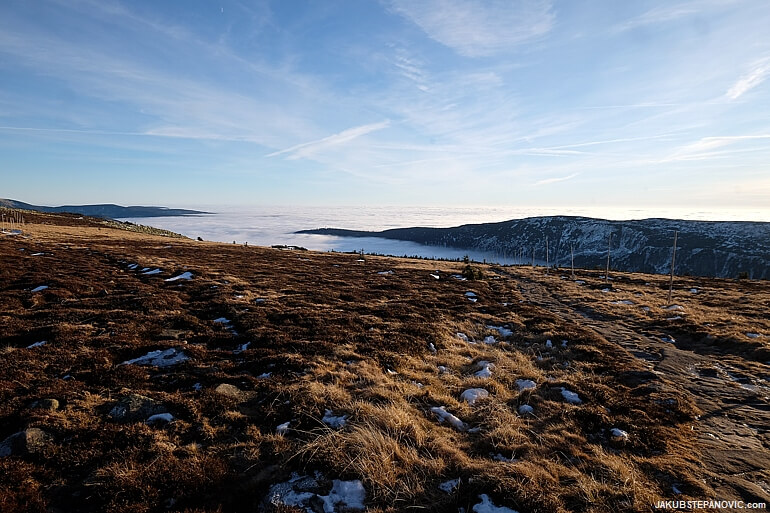
The lowlands in the south were still soaked in the inversion, which, in the evening light, added an even more exotic feel to the location.
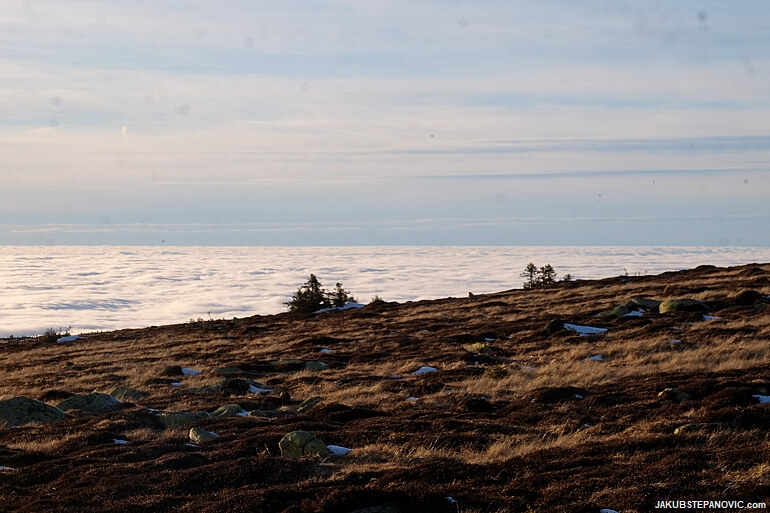
The path crossed a few rivers, which made it feel like the clouds below the ridge were an ocean that the rivers fed.

The ridge formed the mainland, and a few mountains nearby turned into islands.
It was spectacular.

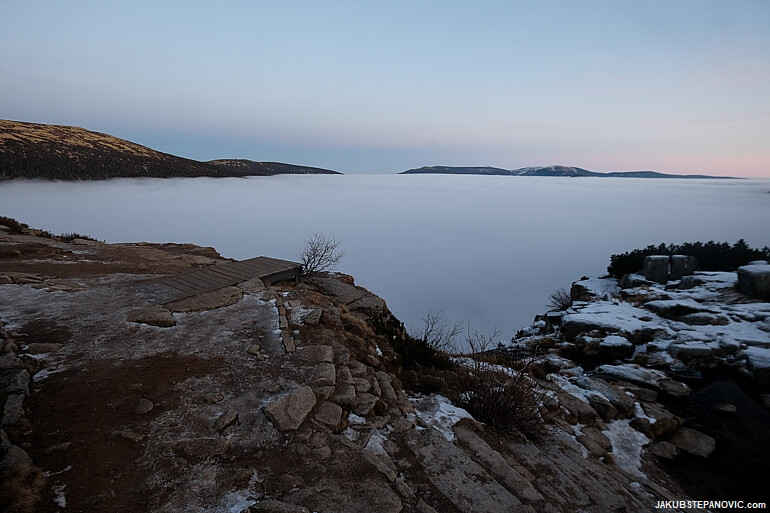
With such outlooks, the time went by quickly, and darkness fell in no time.
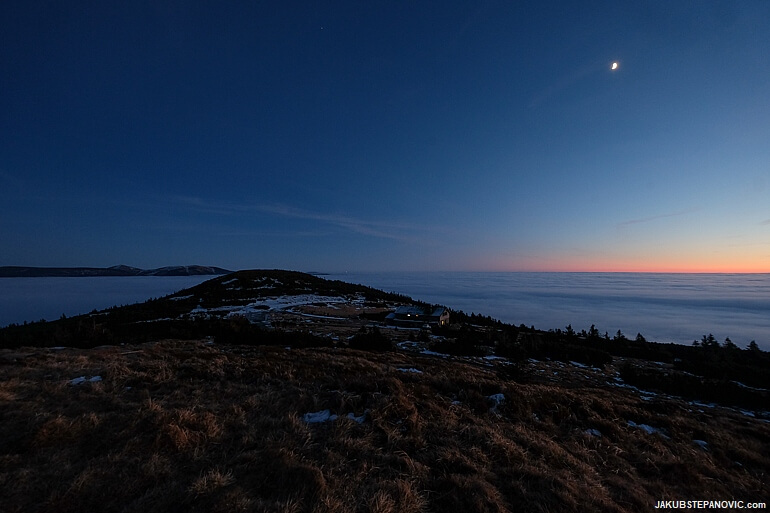
When we reached a good viewpoint, Vrbatovo návrší, it served as a theatre for the sunset.


When the sunrays faded, the clouds got choppier — as if the sea brought a tide of waves. Yet, the air was pretty calm, a welcomed feature when sitting motionless on a mountain.
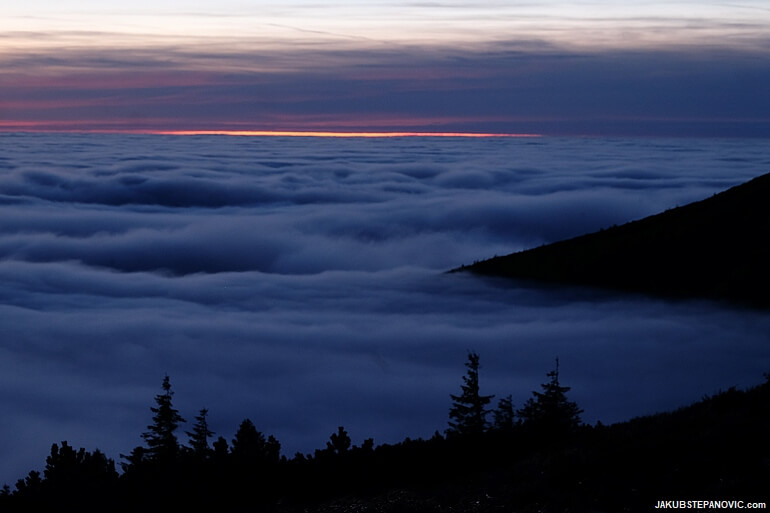
While the lack of light rendered my broken lenses useless, it also meant that stars started to appear. Soon, the moon had additional company. "Is it...?" A bright point that looked like two stars in close proximity started shining above the horizon. "It is..!" Apparently, the last time Jupiter and Saturn aligned this way was in 1623. Moreover, astronomers consider such conjunction the most probable origin of the Bethlehem Star in 7 BC. The inversion enhanced the visibility by blocking the light pollution from the cities below the mountains, and so there it was in all its beauty.
Just under the Vrbatovo návrší is a mountain chalet connected with the rest of the world by a paved road. We planned to follow it down from the ridge. And there, unexpectedly, the memorable day reached new heights: We saw a car parked on the road, behind which stood a group of people. They all gathered around a massive tube pointing towards the conjunction. "Holy Moly, they have a telescope!"
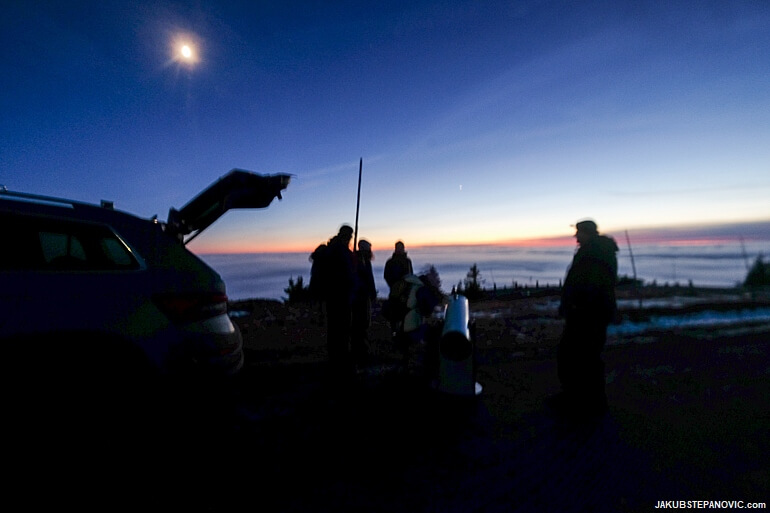
The guy who brought it up said that it provides some 250x magnification, and, more importantly, he allowed us to look. Jupiter was around 762 million kilometers from us, and Saturn was about twice as far. Yet, through the telescope, we could see the details of textures and color stripes on the gas surface of Jupiter and Saturn with its rings.
Sure, one can view loads of ultra-clear images on the internet, but seeing the optical image in person gives an entirely different feel. What a view! I never saw a planet so clearly live, and here, I had two! I even saw four moons of Jupiter as a bonus! There was no chance my broken camera would do it any justice, so I didn't even try to capture it. I just looked up with gratitude.
Later, we said many thanks and started our descent. Shortly after reaching the cloud layer, the conjunction disappeared, and everything past ten meters began to blur. "That's almost like looking through them broken lenses I have," I laughed. The clouds replaced the moon's brightness with a halo of diffused light. Going even further down the clouds meant that the moon disappeared entirely, and we were in total darkness, like in outer space. How exciting!
If you enjoyed this article, you might also like my previous posts about mountains, such as:
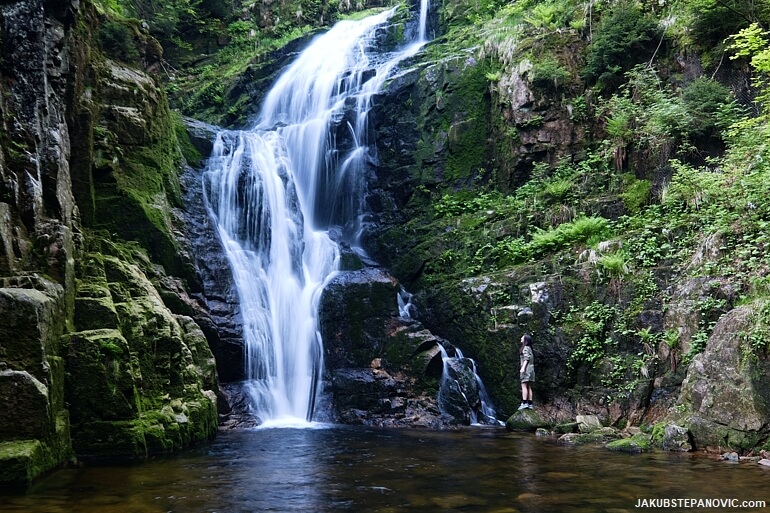
My previous visit to the Giant Mountains. |
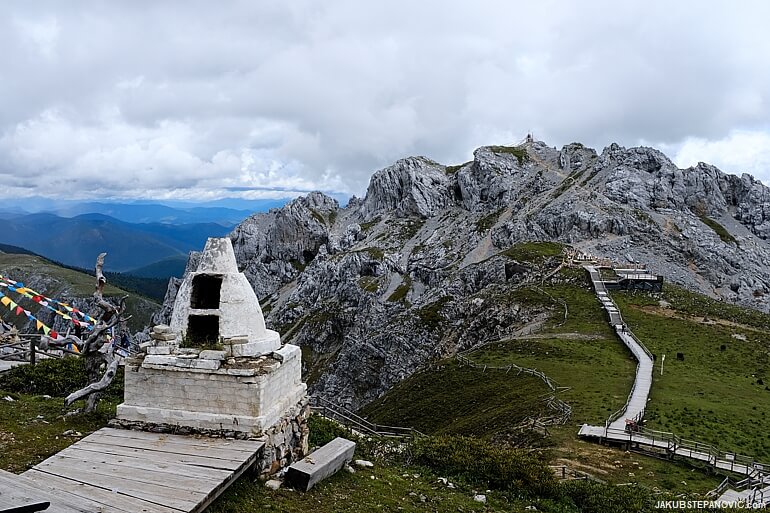
Himalayan foothills near Shangri-la. |
You can also visit my blog archives for more categories and topics. Thanks for reading!


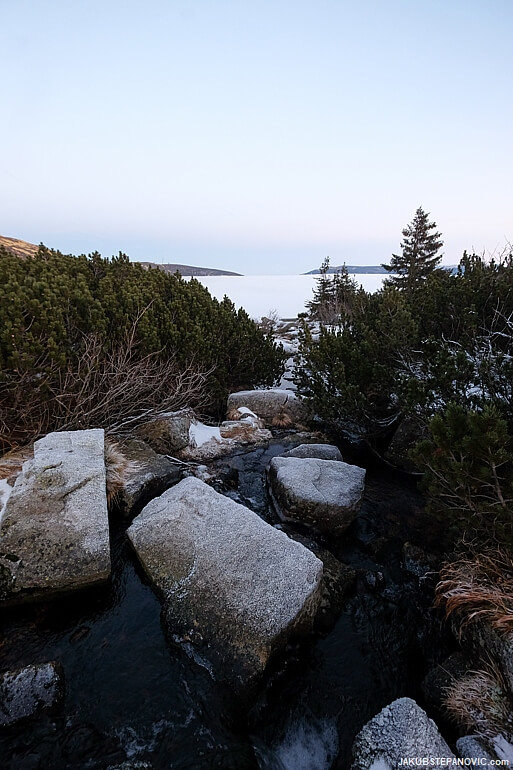

Comments are closed.